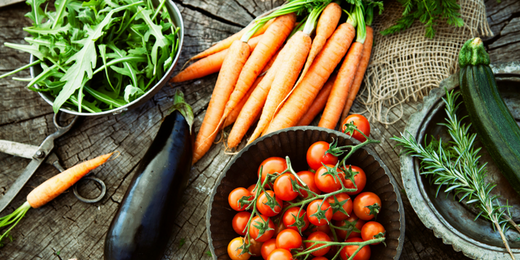
4 minute read
The crisp, delightful taste of fresh vegetables is a wonderful way to add diversity to your diet, but supermarket fruits and vegetables, often accompanied by heavy air miles, can leave a lot to be desired. Growing your own at home is a fun and rewarding way to ensure access to high-quality produce throughout the growing months. If you're excited about the idea but don't know where to start, you're in luck! Here are our top tips for creating and maintaining a brilliant garden of your very own.
Climate: While a great deal can be done to "save" plants that are wilting or underperforming, the best way to ensure successful growing is to start on the right foot. That means doing a bit of research about your geographic area, including determining which hardiness zone you live in. This is a measure of your local climate and expected temperatures, and it's a fast, easy way to determine which plants or seeds will work best for your needs. If your desired plant isn't a good match, don't fret! Most vegetables offer a wide range of varieties designed to work in different hardiness zones.
Design: Your vegetable patch should be placed in an area of your garden that receives ample sun and, ideally, is also within easy reach of a hose for watering. If your garden area is prone to vegetable-loving visitors like rabbits, consider installing a small fence, sunk into the soil, to deter their nibbling.

Soil: Use a premium growing soil from your local garden centre to start, adding a layer of weed matting and a fine layer of large stones at the base of your garden before putting the soil in. This will ensure proper drainage and keep many of the more common weeds at bay. The consistency and temperature of your new garden's soil should be carefully monitored to protect seedlings and maturing plants. Most seeds can’t germinate if the soil temperature is below 7°C. Using a high-quality soil thermometer makes this job an easy one, as it will let you see at a glance if the ground is too cold. If so, simply pop a greenhouse-like cover over your plants until the weather perks up a bit. This handy guide from The Royal Horticultural Society will advise the best time of year to plant the most common vegetables.
Planting: Once your vegetables' new home is ready, follow the garden centre's instructions for placing plants in the soil, mounding it around their bases for stability and watering each one thoroughly immediately after they're planted. You might want to consider adding some soil nutrients around the bases of your plants at this stage as well; it will help ease the transition and encourage strong roots to form.
Maintenance: Particularly in the beginning, it's very important to keep up with watering - your new plants are fragile and still getting adjusted to their new home, and if they dry out they might not spring back. Monitor rain levels in your garden with a rain gauge to ensure your plants are getting enough water. If you're planning on taking any trips during the growing season, it might be a good idea to ask a friend to pop over to water you garden.
Successful Growth: The savvy gardener keeps an eye on their plants' development – spending time in your garden every few days means you’ll be far more likely to notice troublesome issues like insects or blemishes on vegetables. Most common garden pests can be stopped and driven away if they're spotted early, so be on the lookout and pay close attention when watering and weeding.
Support: Some vegetables will need external support to grow properly; tomatoes will need conical cages so as not to become top heavy, and some beans will need small lattices to climb with their tendrils. If you notice any of your taller plants bending or drooping when they shouldn't, use a sturdy bamboo stick or post and soft gardening ties or strips of cloth evenly down the stem to help set it to rights.
Fending off Birds: Unfortunately, some birds are just as fond of delicious fresh vegetables as humans are, so your new vegetable garden will entice their curiosity. Keep your vegetables safe by stretching a fine netting over your vegetable patch, held aloft by corner poles, if you notice birds in your garden. It will allow sun and rain to pass through, but will keep your feathered visitors at a safe distance from your growing crops.
Once your vegetables begin growing in earnest, be patient for them to ripen! It's easy to get excited and pick them too soon, but the flavour is almost always worth the wait. Pick with care so as not to bruise surrounding leaves, using a pair of pruning scissors for a clean cut if the vegetable doesn't simply twist off. Enjoy your new vegetable garden, and, if possible, set aside seeds from your harvest to plant next season as well!